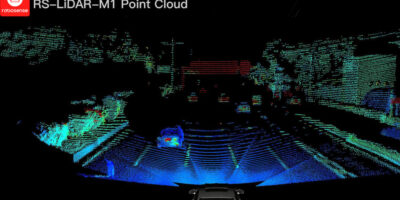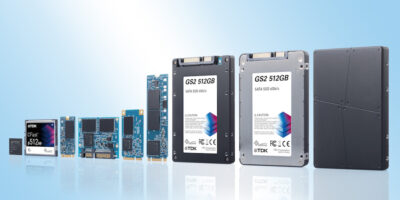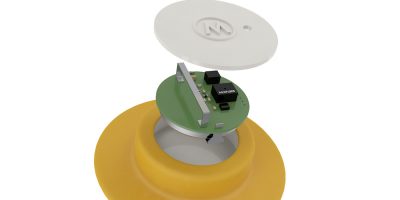At CES 2021, RoboSense announced the standard operating procedure (SOP) version of its automotive-grade, MEMS solid-state lidar, RS-LiDAR-M1.
Features include a ranging capability of more than 150m for 10 per cent reflectivity targets and a range of up to 200m for detecting vehicle objects. The average resolution of M1 is 0.2 x 0.2 degrees (horizontally and vertically) with a wide field of view of 120 x 25 degrees (horizontally and vertically) to create a high resolution of 0.75M pixel points per second.
The RS-LiDAR-M1 has reduced the minimum detection distance to less than 0.5m by upgrading the optical system design and signal processing system. RoboSense has innovated the signal processing algorithms and optical system design, enabling the M1 to distinguish laser emission signals from ambient lights, without interference from strong sunlight.
M1 filters laser pulses from other lidars to prevent crosstalk. The SOP version is claimed to be the world’s thinnest automotive lidar, measuring 108mm in depth, 110mm wide and 45mm high for ease of integration into the vehicle body.
Power consumption is less than 15W. Supporting functions include over-the-air firmware updates, blockage detection, smart cleaning, smart heating, performance detection, power management and network management.
RoboSense has adopted VDA6.3 as the basis of project management and control, implemented IATF16949 quality management system and the ISO26262 standard, and has integrated ISO16750 and other automotive-grade reliability specifications, to carry out a series of verification tests on M1. Tests include random mechanical vibration, mechanical shock, splash water, stone impact, high and low temperature storage and operation, solar radiation, EMC, chemical corrosion and salt spray. The cumulative test time of all M1 test samples has exceeded 300,000 hours, reports the company. The longest-running prototype has been in continuous operation for more than 700 days, and the total road test mileage has exceeded 200,000km.
Founded in 2014, RoboSense provides smart lidar sensor systems, incorporating lidar sensors, artificial intelligence (AI) algorithms and IC chipsets, that transform conventional 3D lidar sensors to full data analysis and comprehension systems.







